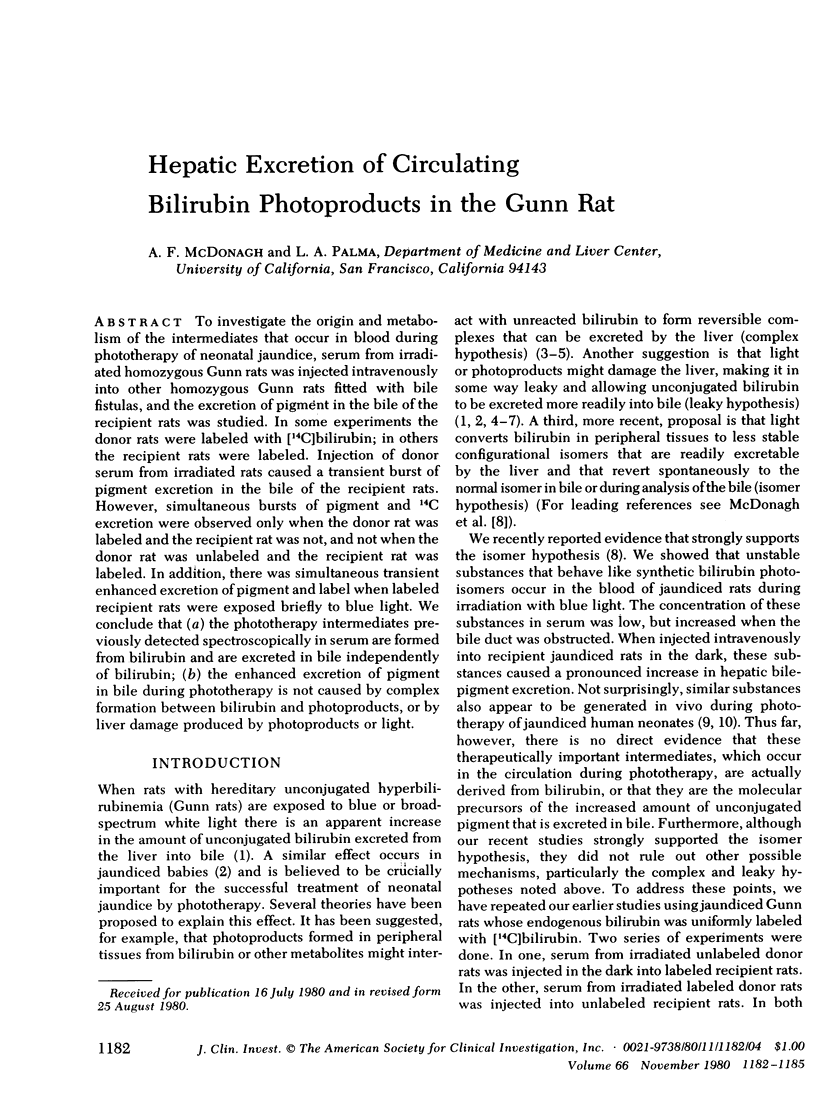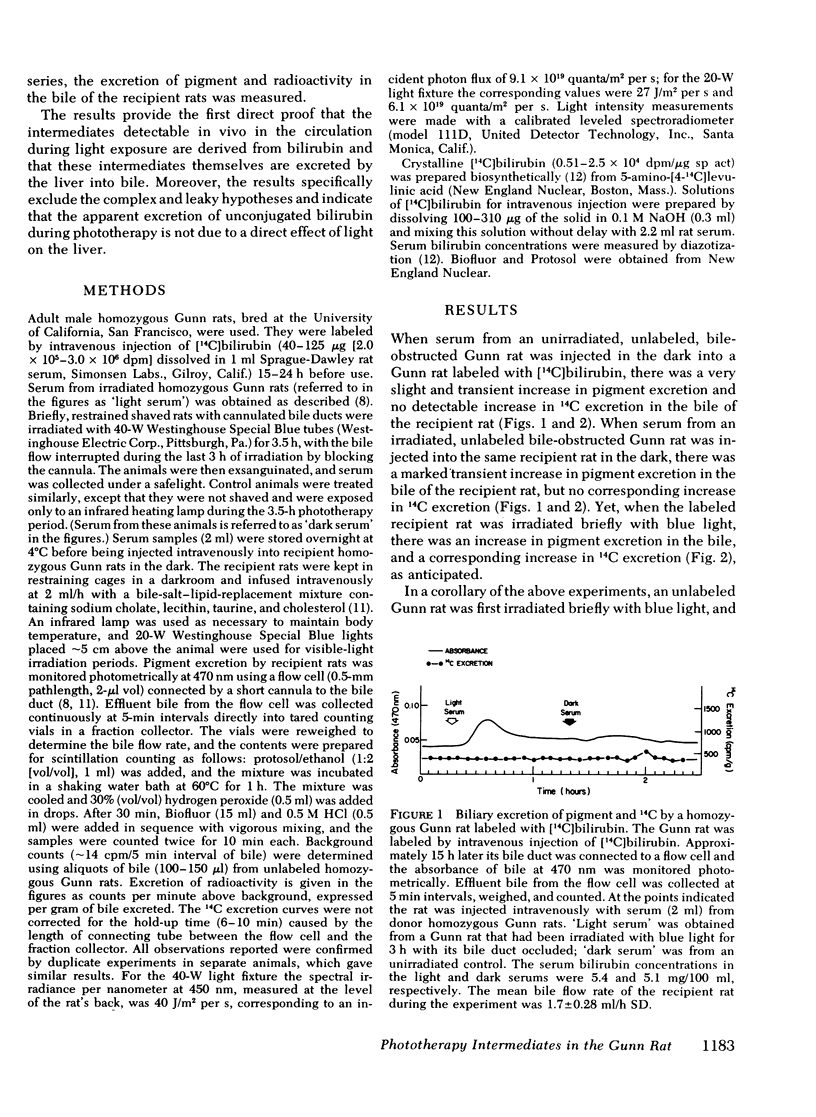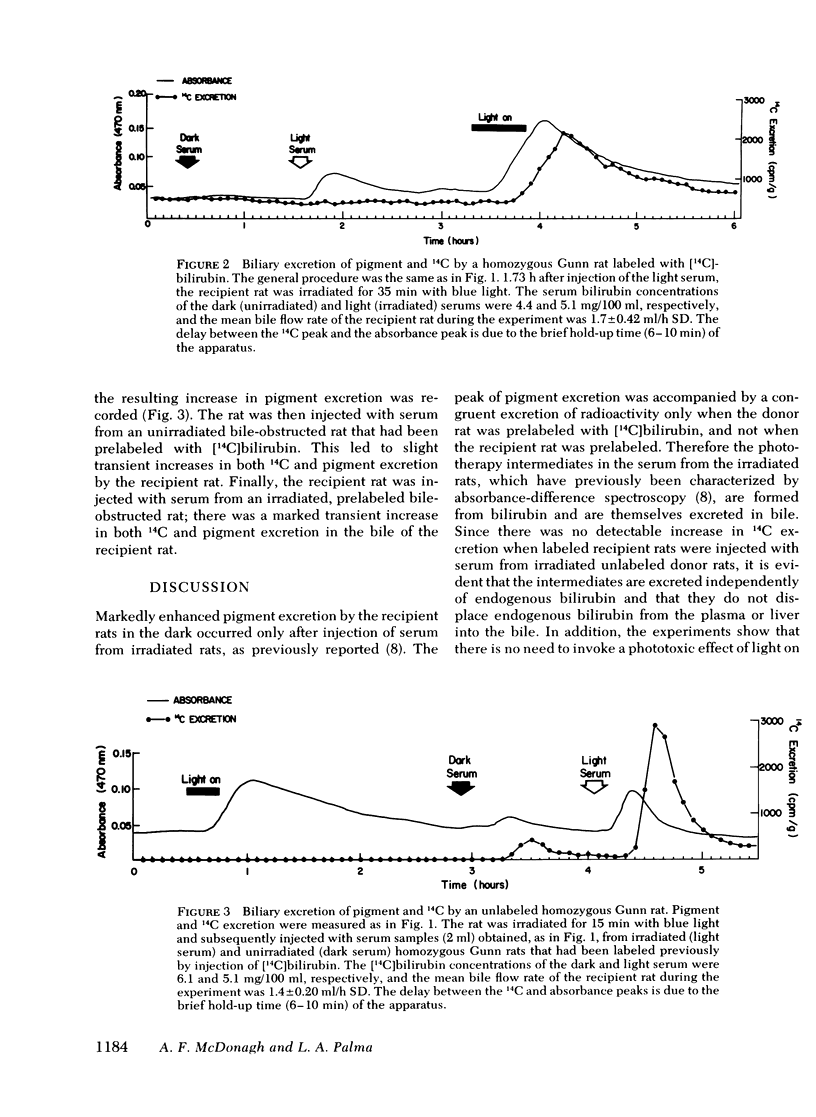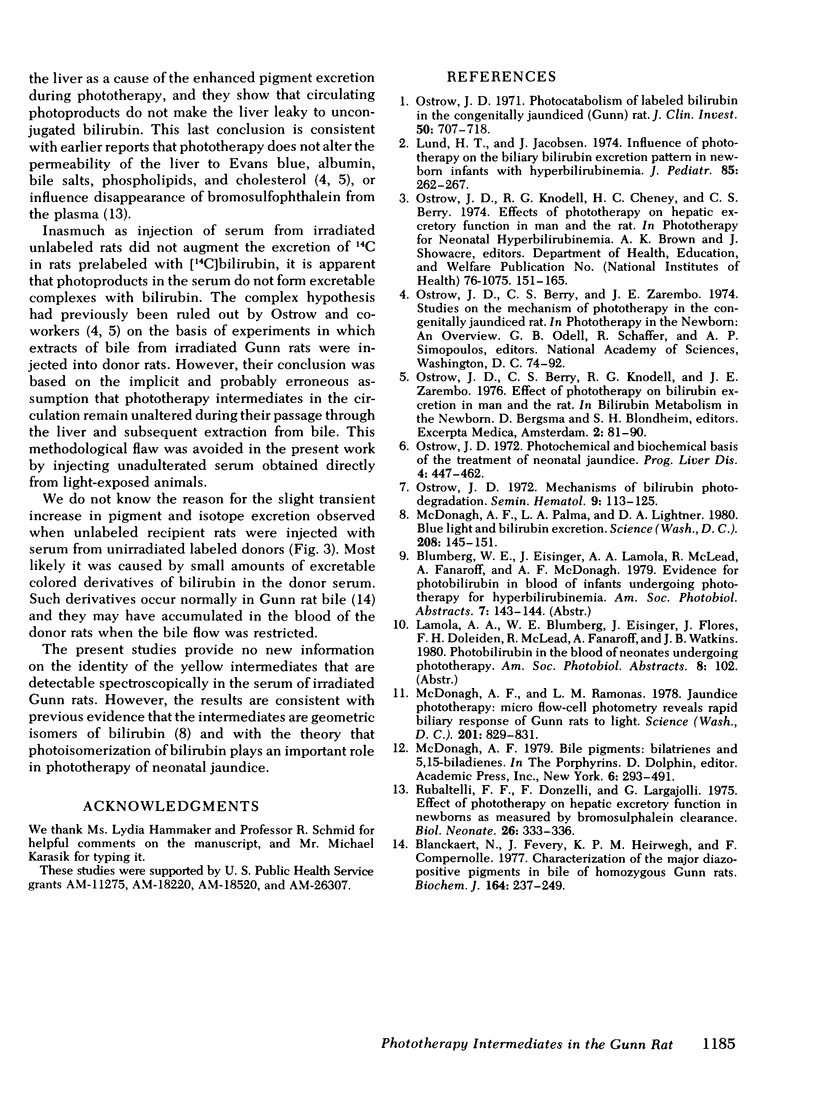Abstract
To investigate the origin and metabolism of the intermediates that occur in blood during phototherapy of neonatal jaundice, serum from irradiated homozygous Gunn rats was injected intravenously into other homozygous Gunn rats fitted with bile fistulas, and the excretion of pigment in the bile of the recipient rats was studied. In some experiments the donor rats were labeled with [14C]bilirubin; in others the recipient rats were labeled. Injection of donor serum from irradiated rats caused a transient burst of pigment excretion in the bile of the recipient rats. However, simultaneous bursts of pigment and 14C excretion were observed only when the donor rat was labeled and the recipient rat was not, and not when the donor rat was unlabeled and the recipient rat was labeled. In addition, there was simultaneous transient enhanced excretion of pigment and label when labeled recipient rats were exposed briefly to blue light. We conclude that (a) the phototherapy intermediates previously detected spectroscopically in serum are formed from bilirubin and are excreted in bile independently of bilirubin; (b) the enhanced excretion of pigment in bile during phototherapy is not caused by complex formation between bilirubin and photoproducts, or by liver damage produced by photoproducts or light.
Full text
PDF



Selected References
These references are in PubMed. This may not be the complete list of references from this article.
- Blanckaert N., Fevery J., Heirwegh K. P., Compernolle F. Characterization of the major diazo-positive pigments in bile of homozygous Gunn rats. Biochem J. 1977 Apr 15;164(1):237–249. doi: 10.1042/bj1640237. [DOI] [PMC free article] [PubMed] [Google Scholar]
- Lund H. T., Jacobsen J. Influence of phototherapy on the biliary bilirubin excretion pattern in newborn infants with hyperbilirubinemia. J Pediatr. 1974 Aug;85(2):262–267. doi: 10.1016/s0022-3476(74)80408-7. [DOI] [PubMed] [Google Scholar]
- McDonagh A. F., Palma L. A., Lightner D. A. Blue light and bilirubin excretion. Science. 1980 Apr 11;208(4440):145–151. doi: 10.1126/science.7361112. [DOI] [PubMed] [Google Scholar]
- McDonagh A. F., Ramonas L. M. Jaundice phototherapy: micro flow-cell photometry reveals rapid biliary response of Gunn rats to light. Science. 1978 Sep 1;201(4358):829–831. doi: 10.1126/science.581101. [DOI] [PubMed] [Google Scholar]
- Ostrow J. D. Mechanisms of bilirubin photodegradation. Semin Hematol. 1972 Apr;9(2):113–125. [PubMed] [Google Scholar]
- Ostrow J. D. Photocatabolism of labeled bilirubin in the congenitally jaundiced (Gunn) rat. J Clin Invest. 1971 Mar;50(3):707–718. doi: 10.1172/JCI106541. [DOI] [PMC free article] [PubMed] [Google Scholar]
- Ostrow J. D. Photochemical and biochemical basis of the treatment of neonatal jaundice. Prog Liver Dis. 1972;4:447–462. [PubMed] [Google Scholar]
- Rubaltelli F., Donzelli F., Largajolli G. Effect of phototherapy on hepatic excretory function in newborns as measured by bromsulphalein clearance. Biol Neonate. 1975;26(5-6):333–336. doi: 10.1159/000240746. [DOI] [PubMed] [Google Scholar]


